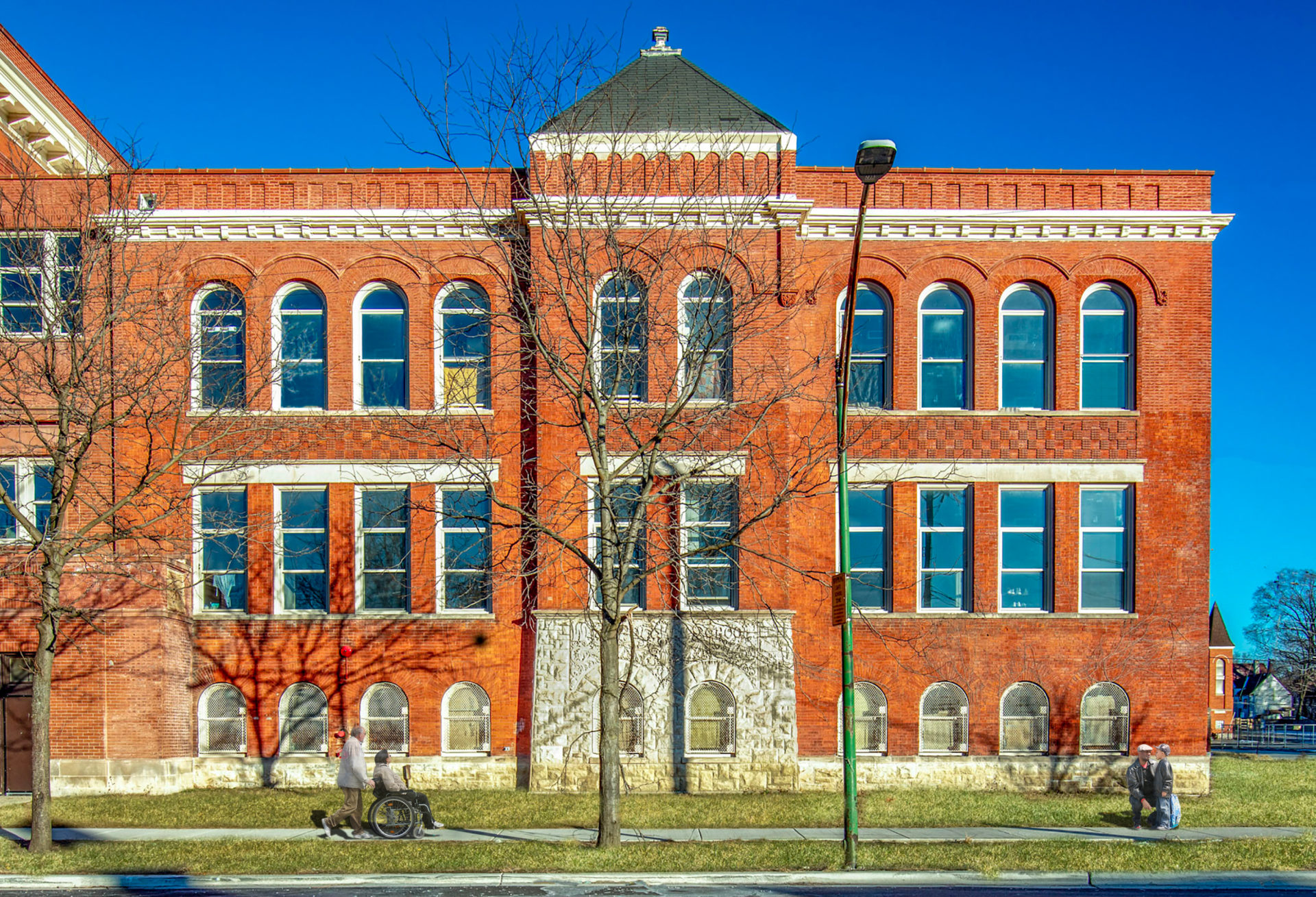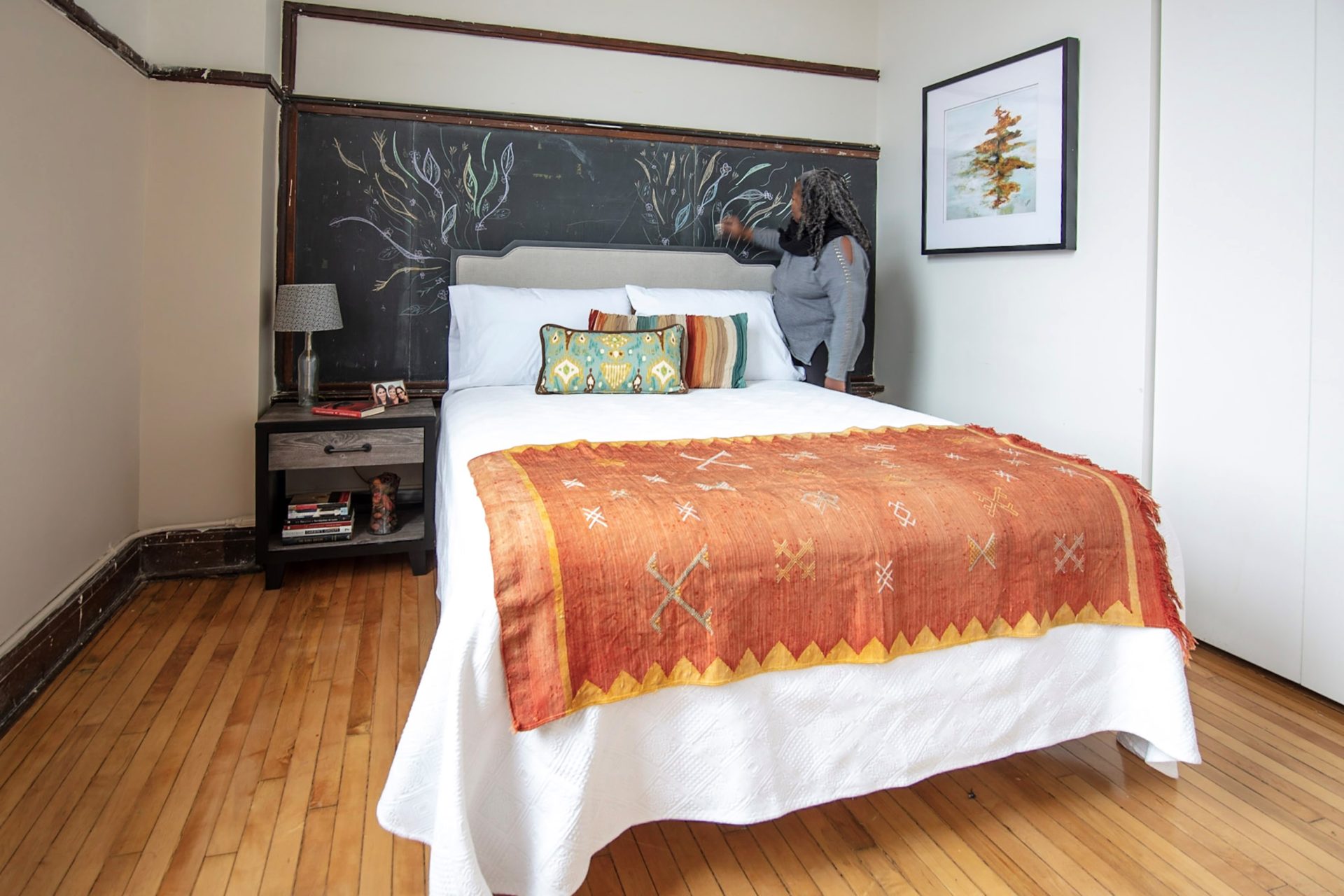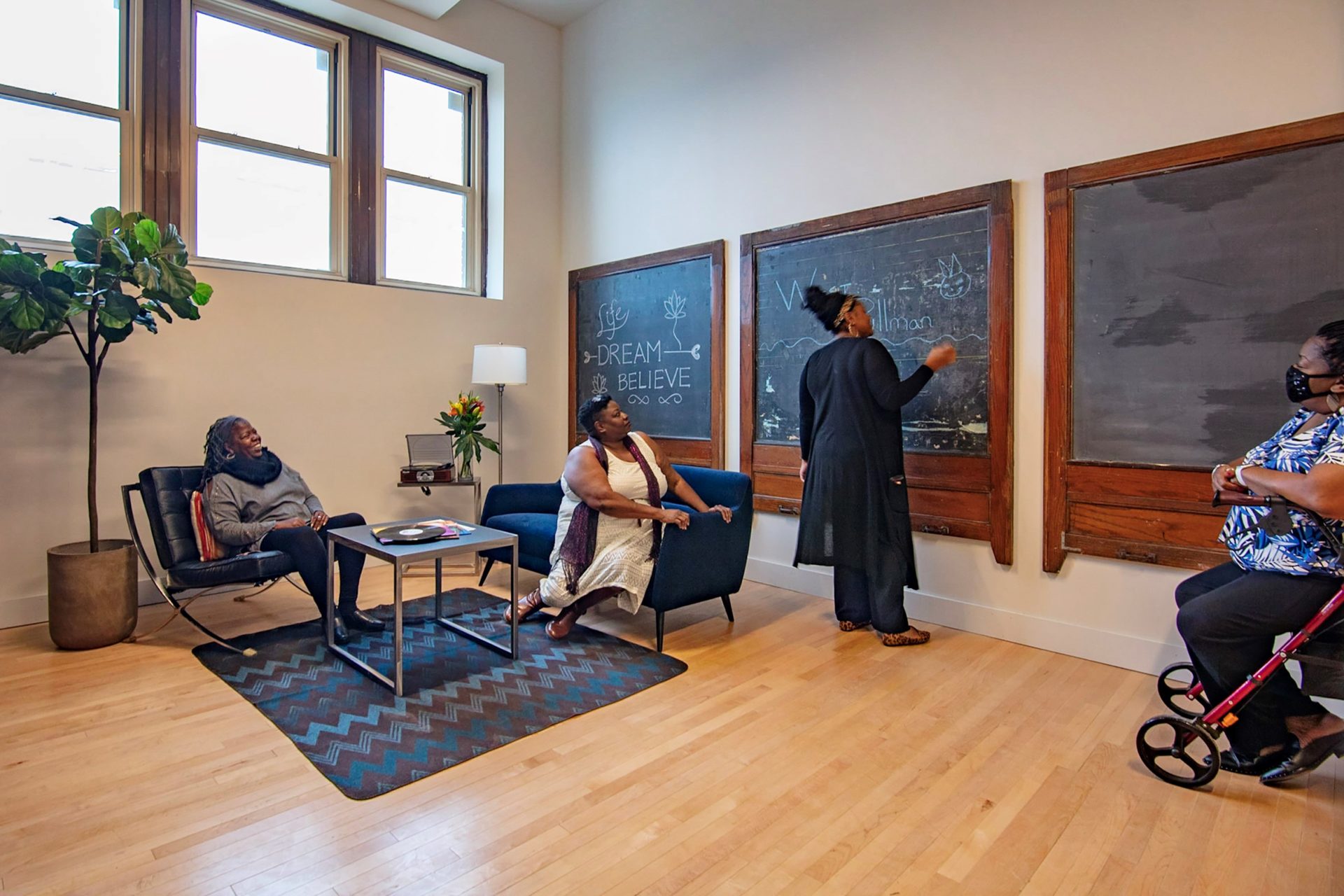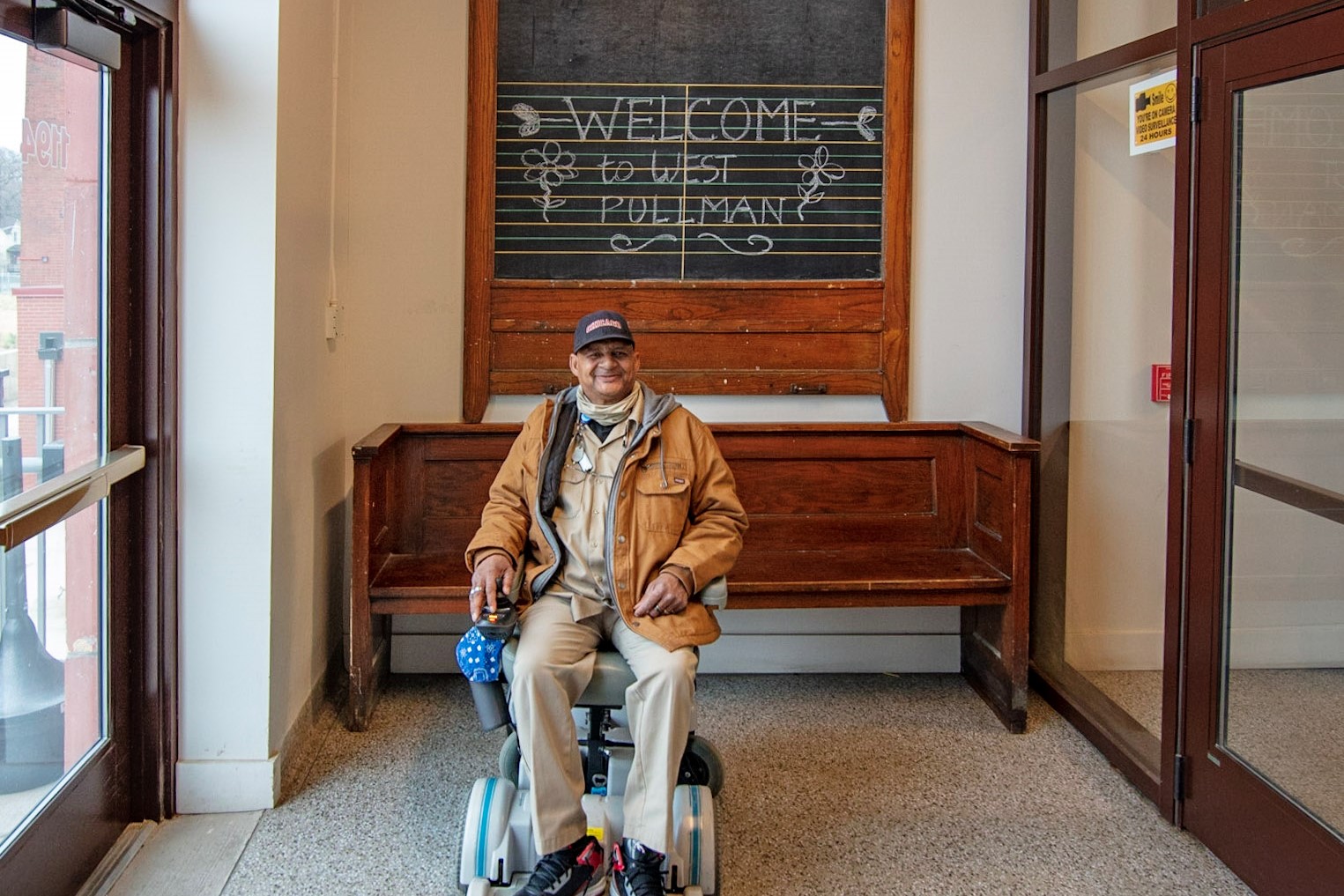2021 Landmarks Illinois Richard H. Driehaus Foundation Preservation AWARD FOR ADAPTIVE REUSE
A three-building school complex, built in 1894, 1900 and 1923, respectively, in Chicago’s historic Pullman neighborhood has been creatively reused as a 60-unit affordable senior housing complex. Both the exterior and interiors of the structures have been restored, with the more than 100-year old brick, stone and wood elements getting a second life. One-third of the units at West Pullman School Senior Community are subsidized by the Chicago Low Income Housing Trust Fund for rents at 15 percent and 30 percent of area median income (AMI), and the remaining units are rented for 40 percent to 60 percent of AMI. Developer Scott Henry of Celadon Holdings, LLC and UrbanWorks led this adaptive reuse project at the Pullman complex that served as an anchor in the community for more than 120 years. The reuse of the structures was a direct response to the neighborhood’s desire to see these places restored and returned to usable space for decades to come.




